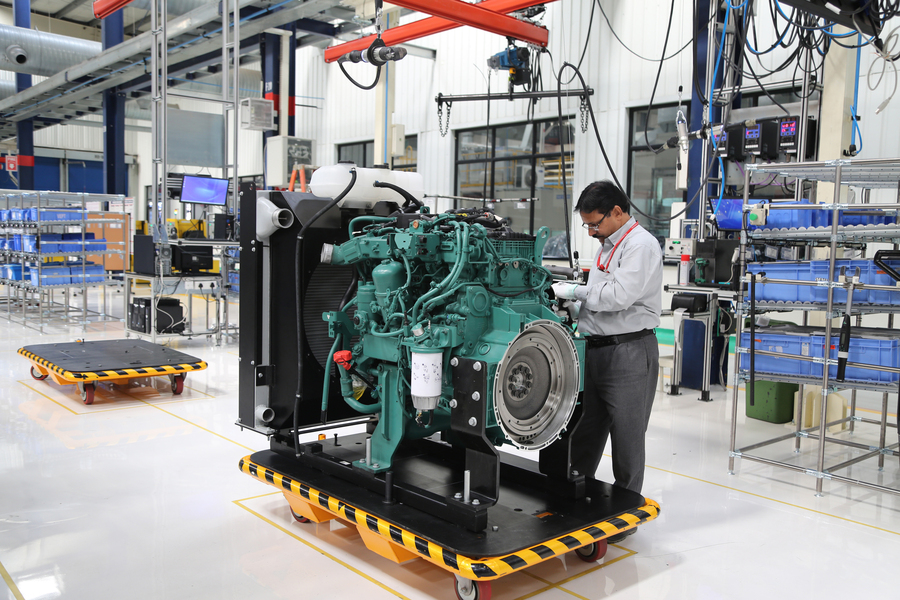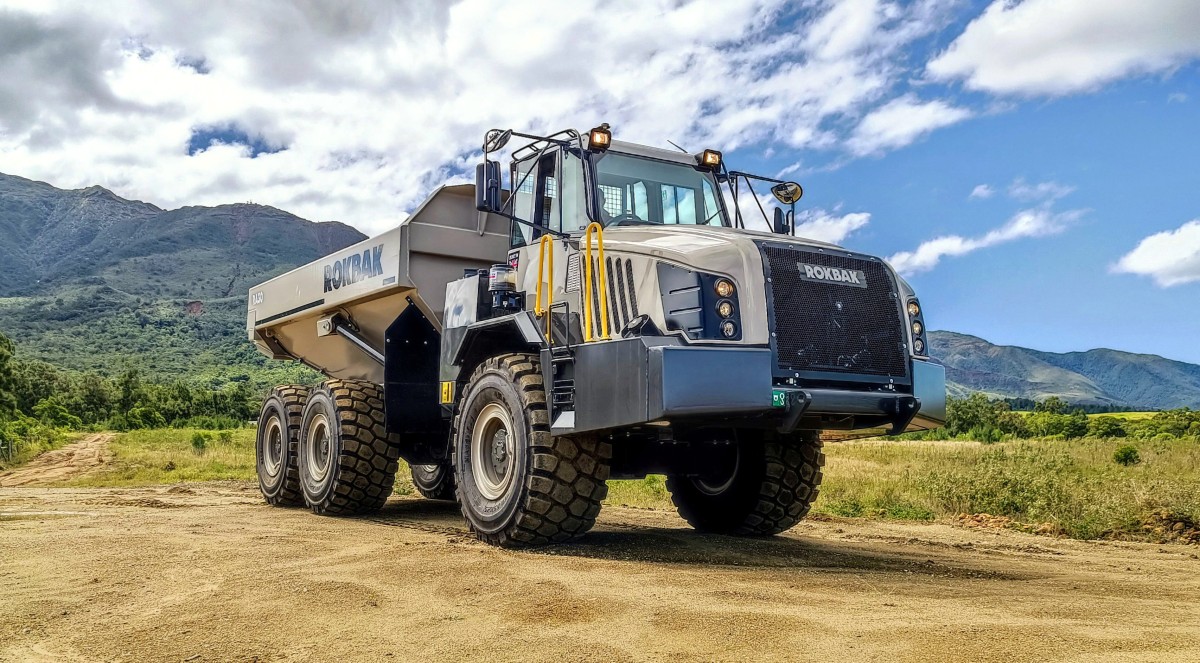Home \ International \ First Volvo Penta engines produced in India
First Volvo Penta engines produced in India
30/04/2017
Pubblicato da Redazione

Volvo Penta engines have been manufactured in India for the first time, at a new dedicated production line at the VE Powertrain (VEPT) plant. The company is ready to serve Indian customers with
Volvo Penta engines have been manufactured in India for the first time, at a new dedicated production line at the VE Powertrain (VEPT) plant. The company is ready to serve Indian customers with off-road industrial engines that are made in India. Following the inauguration of an exclusive Volvo Penta production line at its manufacturing base in Pithampur in the Madhya Pradesh region, customers are now taking delivery of 5- and 8-litre engines being produced in India.
“This is a momentous time for us,” says Jonas Nilsson, head of Volvo Penta in India. “Although we have supplied engines and products to India for two decades, to have them actually produced here for the first time and delivered to customers, is a progressive step. We are ready for whatever the market needs – we are producing premium quality engines made in India, for Indian customers.” One of the first customers to take delivery of the new engines is TIL, a Kolkata-based manufacturer of mobile cranes. “TIL enjoys an enduring relationship with Volvo Penta – one that is based on trust, quality and performance,” says Pinaki Niyogi, vice president, manufacturing and engineering for TIL.
“The Volvo Penta engines, with their compact design, develop higher torque at lower rpm, which enhances our machine’s fuel efficiency. The engines are ready for future emissions stage compliance. The after-sales is also excellent – ensuring fast availability of spare parts and preventive maintenance programs that go a long way in minimizing machine downtime.”
The VE Powertrain (VEPT) plant was launched in 2013 by VE Commercial Vehicles, as a joint venture between the Volvo Group and Eicher Motors. A production line was created exclusively for the manufacture of Volvo Penta engines. Its 5- and 8-liter engines are certified for Bharat Stage III emissions standards. Both ranges can be used for a variety of applications such as construction equipment, agricultural and forestry machinery, crushers and screeners, pumps and cranes. “Indian OEMs can take advantage of our high quality and technologically advanced products, for an increasing number of applications,” says Giorgio Paris, head of Volvo Penta’s industrial segment. “We provide global aftermarket support, so OEMs can be assured that they can manufacture and trade in both the domestic and export markets.” Although emissions standards for off-road engines in India are less stringent than in Europe and North America, it is thought that the Indian government will announce tighter legislative controls in the near future. “As a global company, we already have engines and products for the most stringent emissions levels and we will be able to introduce technologies for the Indian market whenever new standards are introduced,” adds Paris. “The commonality of our engine range platforms means that our offer is scalable for future use. We can deliver what customers want, whenever they need our products.”
Volvo Penta’s global strategy includes increasing production in different locations to be closer to customers in different regions. And the roll-out of production in the Asian country also ties in with Prime Minister Modi’s ‘Make in India’ – an initiative which is aimed at encouraging national and international companies to manufacture in the country, to utilize local skills and boost employment. “The logistical benefits we’ve seen in other markets can now be found in India,” says Peter Hertinge, Volvo Penta’s senior vice president, Global Operations and Quality. “Shorter lead times and a simplified process of planning and delivery, will enable our customers to have incremental sales in a growing market, whilst maintaining operational efficiency. It’s a win-win situation.”

Ultime notizie di Volvo Penta
Components
17/09/2024
Milestone 1,000th Volvo Penta engine powers Eco Log harvesters
Swedish OEM Eco Log helped put the very first Volvo Penta en...

Components
22/04/2024
17 highlights of Volvo Penta’s powerful D17 industrial genset engine
Volvo Penta’s most powerful engine – the D17 – supports the...

Components
23/02/2024
Volvo Penta and Aiab Energy to expand collaboration into BESS solution
Volvo Penta and Swedish backup power solutions company Aiab...

Lifting
09/06/2023
Volvo Penta’s modular electric systems triumph in FTMH partnership
Volvo Penta and FTMH have expanded their partnership to incl...

Components
20/03/2023
Volvo Penta & Gradall collaborate on electric excavator concept
Gradall has unveiled an electrified concept model of its mul...

Components
13/03/2023
Volvo Penta strengthens genset range with new D8 power node
Volvo Penta is introducing a new 200 kVA D8 Stage II engine...
Altri International

International
23/11/2024
GPMat International takes delivery of two Raimondi T147s residential development in the South of France
- Official agent of France expands its product lineup with t...

International
22/11/2024
Sarens acquires additional SCHEUERLE SPMT K24 modules
renowned for its expertise in crane rental services, heavy l...
International
22/11/2024
Five WOLFF cranes modernize Oslo’s Ulven district
With a total of five WOLFF cranes of type 7534.16 Clear, Wol...

International
21/11/2024
Kleemann: New compact crusher used for recycling
Impact crusher MOBIREX MR 100i NEO impresses during operatio...
International
21/11/2024
SITECH partners with Royal Engineers to create poppy and demonstrate tech offering
The demostration involved creating a ground-level poppy desi...

International
20/11/2024
Strong and stable RA30 trucks carry the weight at New Caledonian mine
Three Rokbak RA30 trucks are delivering exceptional durabili...







































